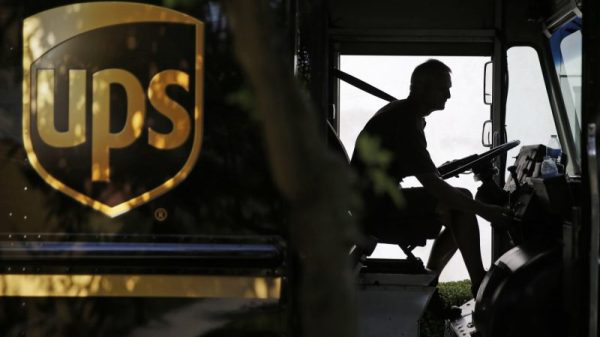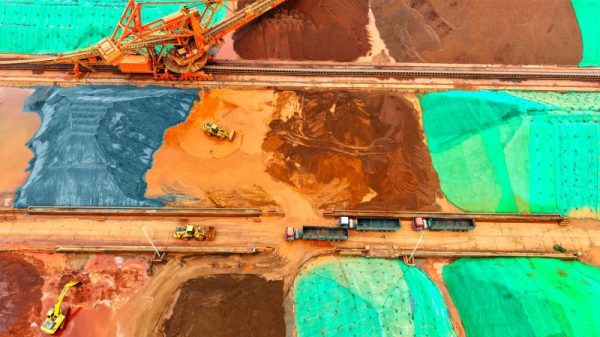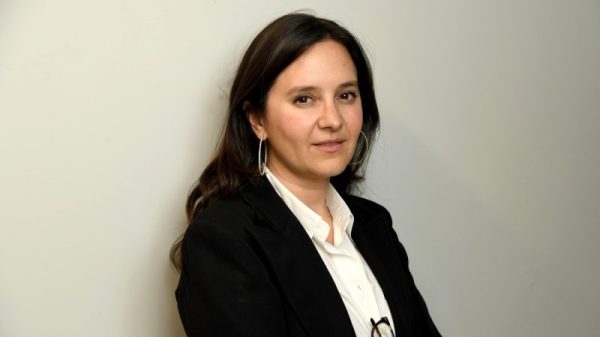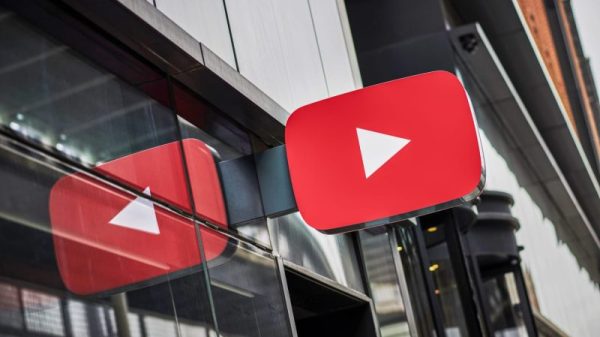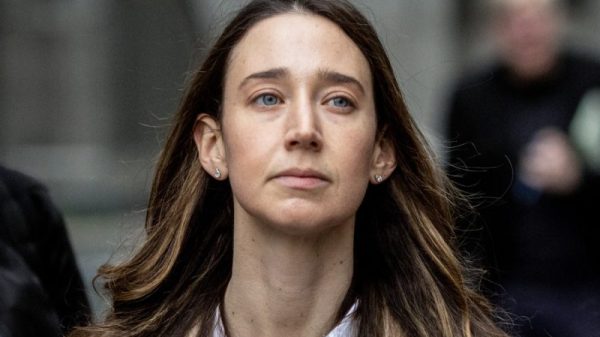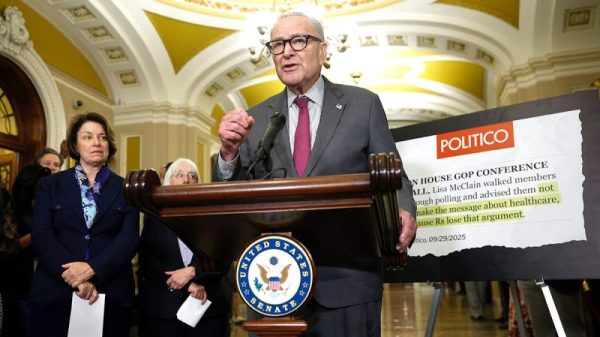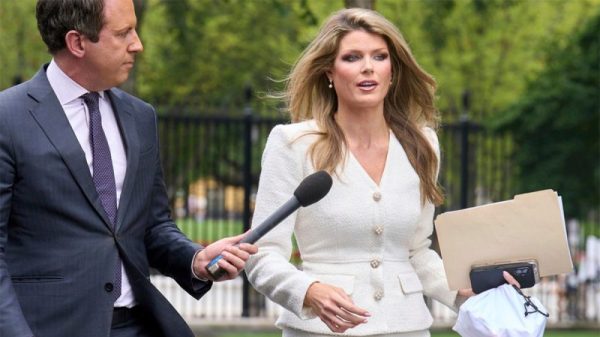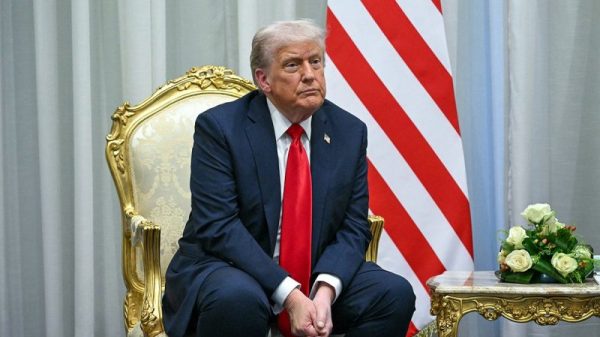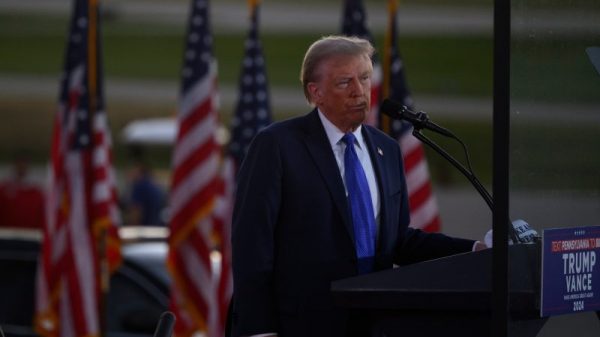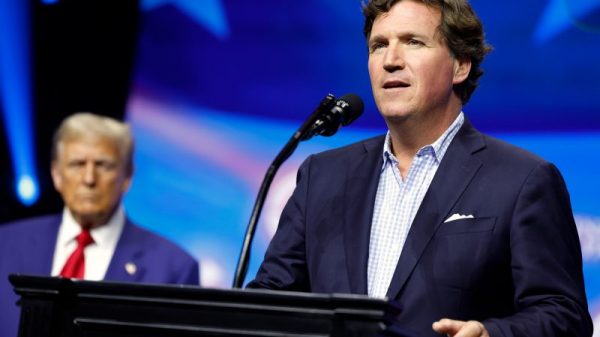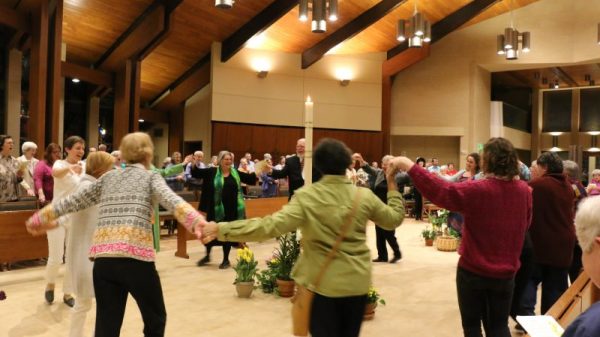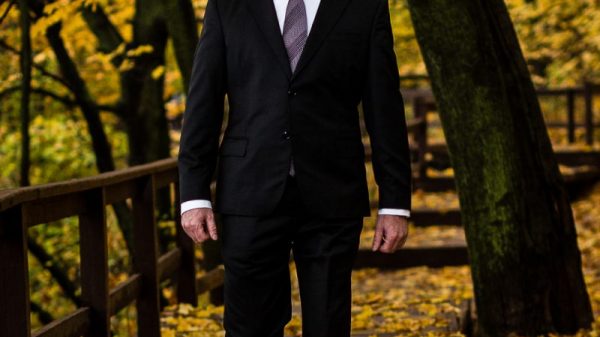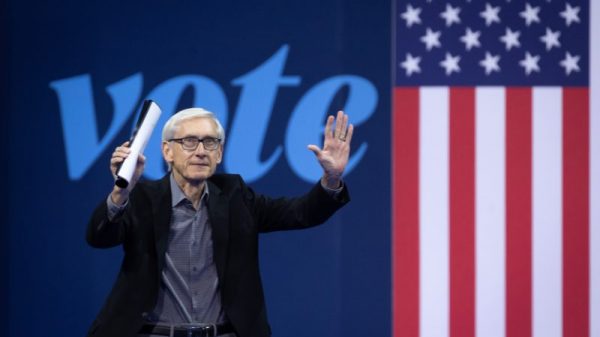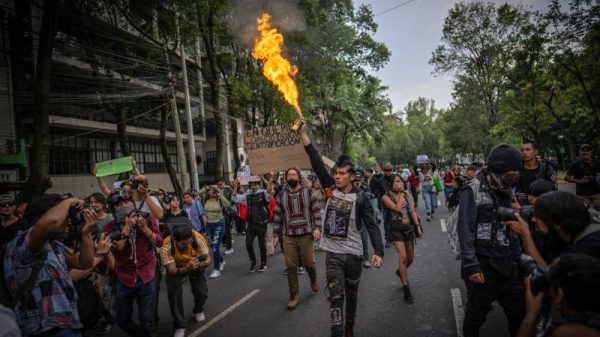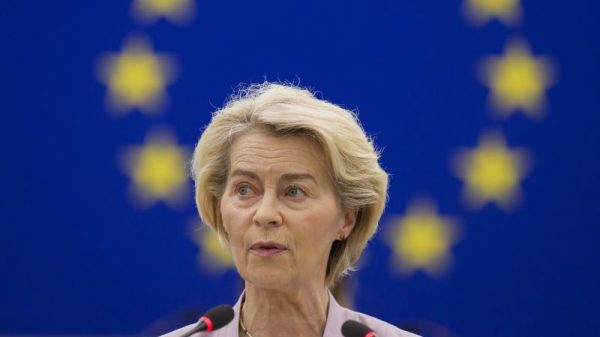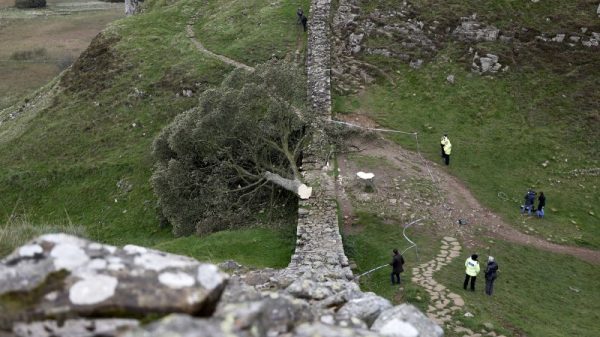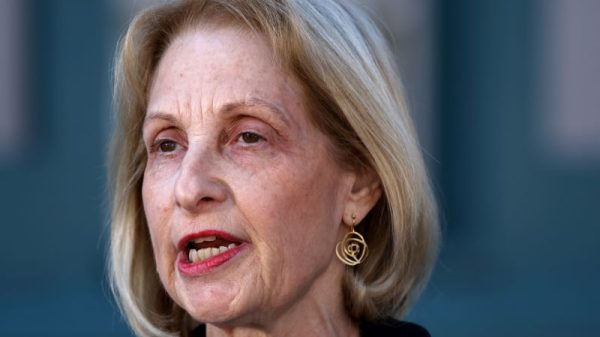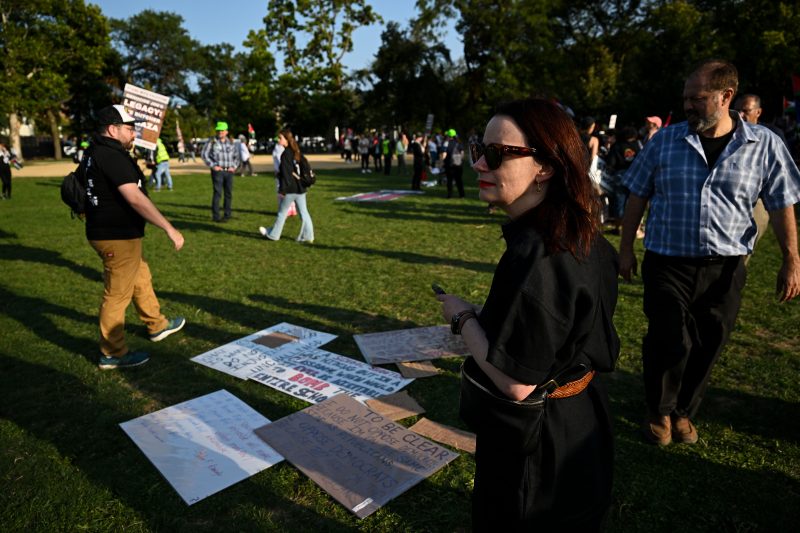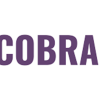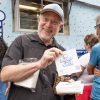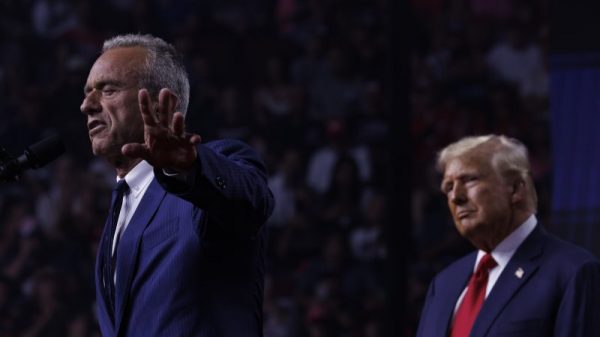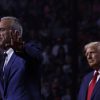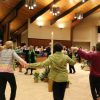CHICAGO — The marchers had moved on, the chants had faded away, and the protest had ended. But Julie Wroblewski’s job is just beginning.
She walked carefully through a public park in this Midwest metropolis, combing over the flotsam left behind by the thousands of pro-Palestinian demonstrators who had crowded in hours earlier to denounce the nearby Democratic National Convention.
She picked up placards and grabbed pamphlets, preserving history as it happened. During a hectic and momentous week here, her mission was vital but easily overlooked.
Wroblewski’s business card says she’s the director of collections for the Chicago History Museum. In layperson’s terms, she’s an archaeologist of the present. If journalists write the first rough draft of history, Wroblewski is gathering material for the more polished version.
In a city with a more explosive political convention history than anywhere else, museum professionals like Wroblewski have been hard at work this week, ensuring that a record of what unfolds inside and outside the United Center is documented for posterity.
With the memory of the infamous 1968 convention hanging over the proceedings, Wroblewski and others have been considering what from the current moment could be important to museum visitors in the decades to come. As society’s shared history becomes increasingly digital, living mostly on unstable and ephemeral formats, old-fashioned preservation work is even more important, she said.
And while Wroblewski’s profession might conjure images of quiet days spent amid dusty stacks of crumbling documents, it’s intensely physical work. History happens outside, and the best way to record it is to see it up close.
“If we just spent all our time sitting in the archives or behind the desk,” she said, “we’d end up with nothing in the museum, and history would have an end date.”
Wroblewski, 48, likes to call her job “Chicago History Museum CrossFit,” and she’s no stranger to 20,000-step days. That’s especially true on weeks like this. The museum specializes in documenting social protest movements, so when big demonstrations erupt in the city, staff fan out to observe and collect.
Earlier this week, Wroblewski arrived in Union Park, about a half-mile from the secured convention zone, as protesters wrapped up their rally and began a march. A police helicopter still thwapped overhead. She wore sturdy sandals, a dress and a hat with the word “Books” stamped on it as she surveyed the detritus left behind.
She was looking for artifacts that, in museum parlance, offered both “evidentiary and informational value.” Basically, does a given piece say something new about what happened at the event, who attended or the broader context in which it happened?
But before she began, she offered a disclaimer: The items she collects, she said, are not meant to reflect a certain viewpoint — neither hers nor the museum’s. Instead, she’s looking to get a wide, representative range of perspectives.
The first sign she pondered was glossy and official looking, stamped with the logo of the coalition that organized the demonstration. Along with “End U.S. Aid to Israel,” the sign called for “Community control of the police now!” Wroblewski considered it. The combination showed how many different causes were animating protesters, she explained, and she picked it up.
The museum, a nonprofit founded in the 1850s, has a multistep process to decide what it will ultimately store in its collection. Because space is extremely limited, the choice is weighty.
The next placard Wroblewski chose showed President Joe Biden, Vice President Kamala Harris and Secretary of State Antony Blinken with their eyes glowing like lasers, an homage to the “Dark Brandon” meme popularized in recent years. The accompanying text accused the leaders of enabling the mass killing of Palestinian civilians.
“This is very of its time,” she said.
But Wroblewski wasn’t just looking to acquire things. She wanted to make connections, too. She introduced herself to protesters and organizers, handed out her contact info and encouraged people to get in touch in the future if they’d like to donate anything. The museum sees itself as a community resource, she said, and staffers want to distinguish it from institutions that have employed unethical or exploitative collection practices.
One item she hopes will be donated: a handcrafted sign she’d seen, shaped like a tank featuring the words “Welcome to Chicago,” evoking a placard with the same phrase seen in the ’68 protests.
The work can sometimes be maddening, especially when it feels like history is at risk of slipping away, either cast off by protesters or picked up by trash collectors.
“There’s probably a thousand things and a thousand stories or more that will end up in the trash because there’s only so much you can collect,” Wroblewski said. “You have to know that you’re not getting everything, but you keep trying to do as much as you can.”
By the end of the week, her haul included five signs, three fliers highlighting the suffering in Gaza, a leftist magazine, a spoofed copy of the New York Times that accused world leaders of war crimes, and three dozen reference photographs of stickers, graffiti and other items too cumbersome to collect on the spot.
Wroblewski and her colleagues aren’t yet sure how they will display the material they gather from this week, but they hope to feature it as an exhibit, conduct an oral history project and make as much available for future researchers as possible.
Until then, it will live in the storage rooms of the Chicago History Museum, a stately building of brick and glass that sits near the shore of Lake Michigan.
On the museum’s second floor, a newly opened exhibit called “Designing for Change” showcases protest art from 1960s and ’70s social movements in the city, including around the bloody Democratic National Convention in 1968.
“Museums are the places that maintain our public record,” said Charles Bethea, its director of curatorial affairs. “When we’re living through events, people have a different lens. Only time allows you to step back and analyze it from every angle.”
At a moment when debates about history — how it’s told and from whose perspective — are fracturing so many parts of civic life, institutions like museums are especially vital, Bethea said.
“It’s almost as if there are only a handful of professions that are the last bastions of truth,” he said.
Down the hall from the “Designing for Change” exhibit is the museum’s permanent 1968 installation, an arresting wall featuring pins worn by protesters, a battered Chicago police helmet and a looping video recapping the violence in and around the convention. While protests this week remained largely peaceful and never approached the mayhem of 1968, the parallels were still striking.
On Wednesday afternoon, a couple of Democratic delegates from New Jersey wandered into the exhibit and stood in front of it, transfixed.
“I was born in 1967, one year before this happened,” said Della McCall, from the city of Paterson. “And here I am, 56 years later.”
She was in town to nominate a barrier-breaking candidate, and even though it’s far too soon to know how this week will be viewed in another half-century, one thing is certain, McCall said.
“We’re witnessing history,” she added, “right up close and personal.”






